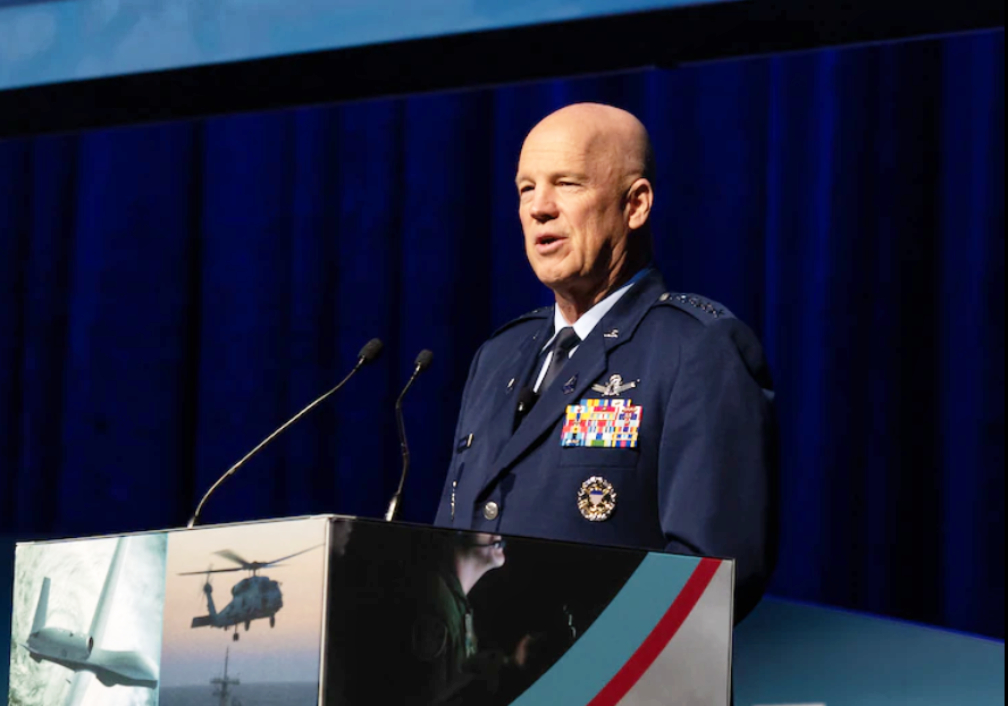
Late last month, emphasizing familiar and proven themes to an international audience, Chief of Space Operations, Gen. John W. “Jay” Raymond said during a speech in Australia that effective and unfettered operation in space is the cornerstone of a nation’s security, its economic vitality and global stability.
“Space has become necessary to our modern way of life… From navigation to precision timing, banking, agriculture, and much more, we all make use of space assets every day, and our reliance on space is only going to increase over time,” Raymond said at the 2022 Air and Space Power Conference held in Australia’s capital, Canberra.

“No matter where you are, your security in some way depends on space and on our ability to access the data collected by our on-orbit assets.”
By traveling to Canberra to deliver his high-profile remarks, Raymond also represented additional truths. The first is that space today is more crowded and dangerous than ever before, as dozens of nations are now active in the domain. Second, space is no longer the “benign” environment it once was, he said, pointing out that space has evolved into a universally acknowledged warfighting domain and potential conflict zone.
“We can no longer take space for granted,” Raymond said, repeating a refrain he has voiced often since the Space Force was born on December 20, 2019, and he was named its highest-ranking military officer.
“A few years ago, I still couldn’t talk about space as a warfighting domain—but the actions of a few nations in space have made this all too clear: we can no longer operate under the illusion that our assets in space—which we rely on heavily for our security as well as for our way of life—will remain safe from potential adversary action.”
That is also the reason that close collaboration with space-faring nations such as Australia is so important, he said. In a significant development, Australia announced on the same day Raymond spoke that it had officially established its own Defence Space Command, a major new part of the Royal Australian Air Force, with a singular focus on the space domain.
The goal, said Australia’s Defense Minister Peter Dutton, is to expand Australia’s capabilities in space and to foster “a larger, collective effort among like-minded countries to ensure a safe, stable and secure space domain.”
Additionally, Dutton said Australia had reached formal agreements with the United States to work together on space issues and “a broad range of satellite activities.”
Raymond recognized the bonds in his remarks.
“We are partnering with more and more nations on national security space. And we deeply value our partnership with Australia. Perhaps the most significant example of our collaboration is in the area of space situational awareness,” Raymond said,
“ … By standing together, we bolster deterrence, decreasing the chances of aggressive acts both in space and in the other domains. Working together helps us move faster in our urgent goal to replace our current space architecture, which is made up of fragile, exquisite satellites, with a more resilient network—one that can withstand attack and thus eliminate the first-mover advantage of a potential adversary.”
The collaboration with Australia is especially close and mutually beneficial, Raymond said.
As an example, he noted that an important space surveillance telescope began operating in Australia in 2019 after moving from the United States six years earlier, and that telescope is expected to go into full operation later this year, with both Australia and the United States operating and maintaining it.
“Thanks to its new location here in Australia, the telescope will have observation over the Southern Celestial Hemisphere, adding a significant data collection capability to our coalition forces,” Raymond said. The U.S. has good visibility over part of the globe from the north, and Australia has the vantage point from the south. “That makes for a really great team,” he said.
In 2014, Australia and the United States joined with Canada and the United Kingdom, formally agreeing to a Combined Space Operations Memorandum of Understanding. That agreement, Raymond said, allows each nation “to get smarter on the current and future space environment, and to enhance our military-to-military relationships.”
Additionally, the U.S. and Australia cooperate in the Advanced Extremely High Frequency system, which is a constellation of communication satellites that provide services to the U.S. and Australia, as well as to Canada, the Netherlands and the United Kingdom. “Thanks to AEHF, our combined forces, whether on the ground, at sea, or in the air, can make use of vastly improved global, survivable, and protected communications capabilities,” Raymond said.
As for the people behind the mission, Raymond noted that two Space Force Guardians are currently embedded with the Royal Australian Air Force, while eight Royal Australian Air Force personnel are serving with the Space Force.
“These personnel exchanges allow our people to train together, operate together, and build strong, lasting relationships, which enhance our forces’ ability to conduct real-world missions when needed,” he said.
The driver behind all these actions, efforts and partnerships, and, indeed the creation of the Space Force itself, Raymond said, is clear.
“We need every advantage we can get… Our pacing challenges have set an extremely fast pace, and we’ve got to move faster to stay ahead. Working with allies and partners is how we are going to do that,” he said. “We are stronger together.”
This article was authored by Charles Pope, Secretary of the Air Force Public Affairs
